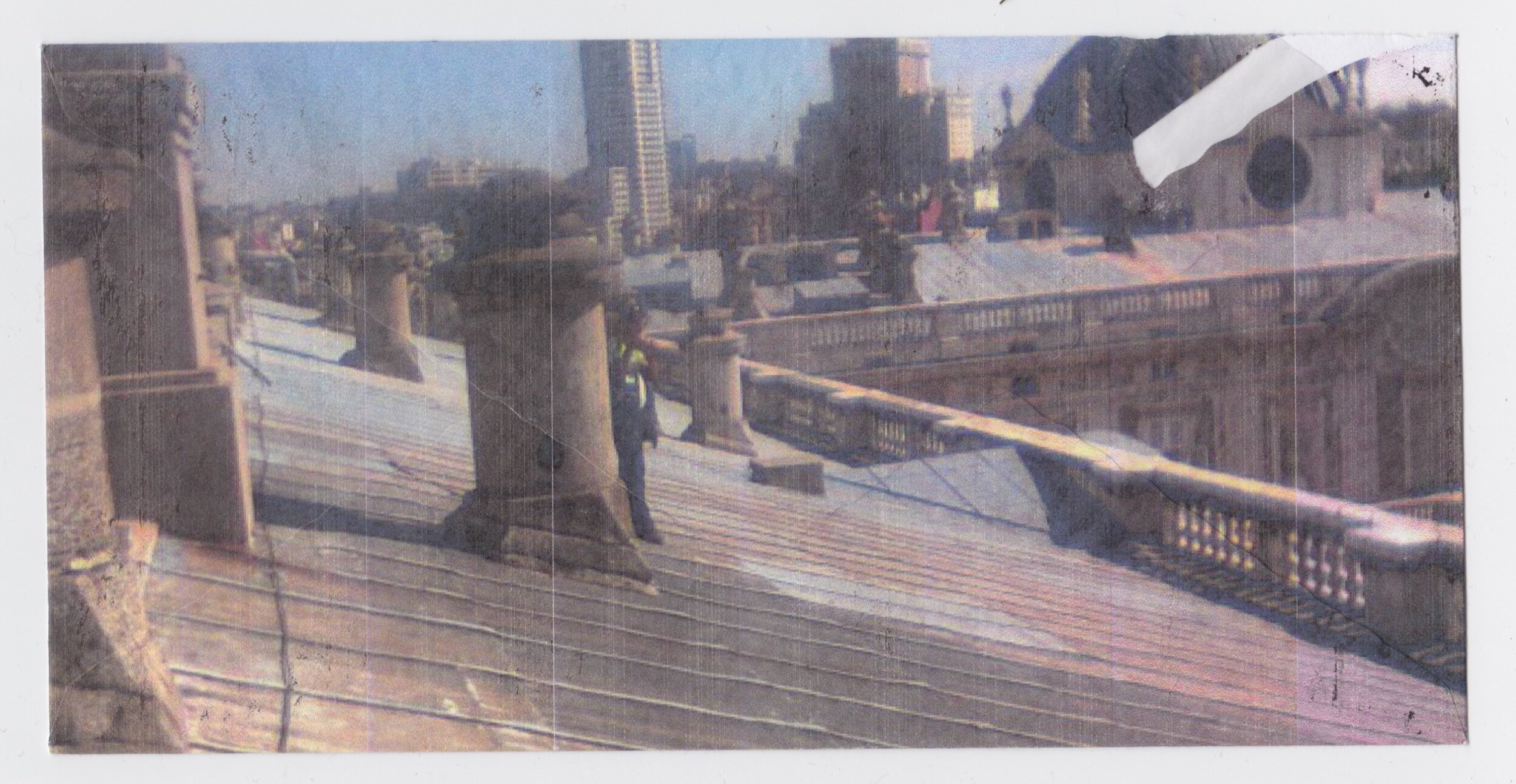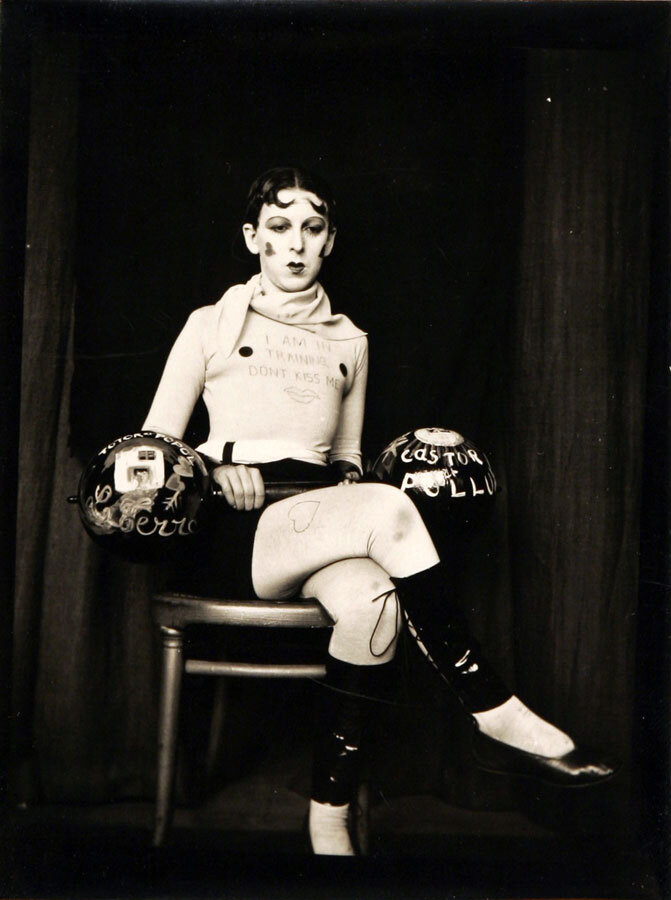What image do I have in mind at the moment? It’s difficult to give a quick answer to the question Objektiv has proposed. In my work as a photo editor for the daily press, I see thousands of shots on my monitors every day. This ocean of images, mainly from agencies, formatted, and in the end, very similar, does not help with digestion. Rather than writing about press photos, I want to talk about images or series of images from exhibitions or festivals that has made an impression on me lately. But when squeezing, nothing came out. So I put this question in the corner of my mind for a few weeks, and let it decant. Regularly, like the backwash of a wave, a handful of shots came back; sometimes engulfed but eventually graved in my visual memory. Nothing new, nothing current. So I allowed myself to slightly modify the question: which image, absorbed a long time ago, has stayed etched in my memory and resurfaced regularly?
Among the icons of my “imaginary museum”, there is one that haunts me. A terrible image of infinite sadness but of absolute relevance. In Madrid, February in 2014, an exhibition soberly entitled Work, a retrospective of the work by Chris Killip, was presented at the Reina Sofia Museum. I knew the photographer’s work, and several of his series on the impoverished communities in northern England, the victims of deindustrialization in the early 1980’s in the beginning of Thatcherism. I’d seen them online or in catalogues, notably In Flagrante (1988). But this image was unknown to me because it was absent from the books.
I don’t want to linger on the formal composition of the scene, the position of the body and the closed eyes of the little boy in his Sunday best, floating in adult clothes, his head bent on the line of the horizon, the slight oscillation of a swaying boat, of which only the bow is in the frame. A form of a closed room, without doors or windows, perfectly executed. I would, however, like to emphasise the caption: Simon being taken out to sea for the first time since his father drowned, Skinningrove, North Yorkshire, 1983. Everything we need to know is there, in this exact wording. A subject, described by his first name, the reason for his presence, a place, a date. 18 words.
Although the image alone can produce this piercing effect, this “punctum” dear to Barthes, allowing the observer to appropriate it beyond all knowledge, code or culture; the caption gives us information that is essential to our comprehension. What is mind-blowing in this link between text and image is that it reveals the evidence of an extraordinary situation. It enables an immediate comprehension of the degree of commitment the photographer has with his subject. Killip’s approach is unique, the author is distant, out of frame and at the same time, completely immersed in a poignant intimacy. Only the construction of a long- term relationship with this tiny fishing village named Skinningrove, where he documents the daily life of its inhabitants, allows him to produce a scene like this and show it to the world.
With an image so prone to allegory, one could make it say a number of things: a rite of passage into adulthood, filial love, sadness and sorrow. One could also enter into dialogue with other images, I’m especially thinking of the one of Alan Kurdi, the little Syrian boy washed up on a Turkish beach in September 2015. This “shock image” that rapidly went worldwide, became the tragic symbol of the migrant crisis in the Mediterranean. In this reversed perspective we see a small, drowned body and not the survivor, his father, who subsequently testifies of the drowning to international media. Within me, the connection is evident: in my visual memory, these images are contemporary, and as a father of two children the age of Simon and Alan, they move me particularly. But the comparison stops there. We cannot suspect Killip of voyeurism. His restraint, his sense of propriety, his engagement, his empathy are all entirely resumed in this image and its caption.
During a presentation at Harvard University in 2013, where he taught from 1991 to 2017, Killip confides his discomfort on the use of this scene and a few other images taken that day: “I don’ t know how... if I should use these photographs or how I could use these photographs. I’m very unsure about what use they are... ». And indeed, the author dismissed the image from the two editions of In Flagrante (1988 and 2015). During a later conversation held in 2017 at the Getty center in Los Angeles, he clarifies: “In Flagrante means ‘caught in the act’, and that’s what my pictures are. You can see me in the shadow, but I’m trying to undermine your confidence in what you’re seeing, to remind people that photographs are a construction, a fabrication. They were made by somebody. They are not to be trusted. It’s as simple as that.”
Matthieu Nicol runs Too many Pictures, a cultural consultancy working in the field of photography and visual arts, from Paris. He is also a picture editor for the daily newspaper Le Monde.
There is a a small publication dedicated to skinningrove available here.
En français:
Quelle image ai-je en tête en ce moment ? Il m'a été compliqué de répondre rapidement à cette question, à l’invitation d’ Objektiv. Dans mon travail d'éditeur photo pour la presse quotidienne, je vois passer plusieurs milliers de clichés par jour sur mes moniteurs. Cet océan d'images, principalement d'agence, formatées et finalement fort similaires n'aide pas à la digestion. Plutôt que de photos de presse, j’ai alors cherché à parler d'images ou de séries m’ayant marquées dernièrement dans des expositions ou des festivals. Mais en pressant, rien ne sort. Et j'ai mis cette question dans un coin de ma tête durant quelques semaines, et laissé décanter. Régulièrement, tel le ressac, reviennent une poignée de clichés parfois engloutis mais finalement gravés durablement dans ma mémoire visuelle. Rien de neuf, rien d'actuel. Alors je me suis permis de modifier quelque peu la question : quelle image, assimilée depuis longtemps, est restée gravée dans ma mémoire et refait surface régulièrement ?
Parmi ces icônes de mon « musée imaginaire » il y en a une qui me hante. Une image terrible, d'une tristesse infinie, mais d’une justesse absolue. C'était en février 2014, à Madrid. Une exposition sobrement intitulée Work, rétrospective du travail de Chris Killip présenté au Musée Reina Sofia. Je connaissais le travail du photographe, et plusieurs de ses séries sur les communautés paupérisées du nord de l’Angleterre, victimes de la désindustrialisation à l’aube des années 1980, début du Thatcherisme. Je les avais vues en ligne ou dans des catalogues, et notamment In Flagrante (1988). Mais cette image m’était inconnue, car absente de ces ouvrages.
Je ne souhaite pas m’attarder ici sur la composition formelle de cette scène, la position du corps et les yeux fermés de ce petit garçon endimanché, flottant dans des habits d’adulte, sa tête courbée crevant la ligne d’horizon, la légère oscillation d’une barque qui tangue et dont seule la proue est dans le cadre. Une forme de huis-clos, sans portes ni fenêtres, parfaitement exécuté. Je voudrais en revanche insister sur sa légende : Simon being taken out to sea for the first time since his father drowned, Skinningrove, North Yorkshire, 1983. Tout ce que l’on a besoin de savoir y est dit, dosé au mot près. Un sujet, décrit par son prénom, la raison de sa présence, un lieu, une date. 18 mots.
Si l’image seule peut créer cette fulgurance, ce « punctum » cher à Barthes qui permet à celui qui l’observe de se l’approprier, au-delà de tout savoir, de tout code, de toute culture, la légende ici donne une information essentielle à sa compréhension. Ce qui est sidérant dans ce rapport texte-image, c’est qu’il révèle l’évidence d’une situation exceptionnelle. Il permet de comprendre immédiatement le degré d'engagement du photographe avec son sujet. La pratique de Killip est singulière, l’auteur est distant, hors cadre et en même temps, totalement immergé dans une intimité poignante. Seule la construction d’une relation de long terme dans ce village de pêcheurs nommé Skinningrove dont il documente au long cours la vie quotidienne des habitants, lui permet de produire une telle scène et de la donner à voir au monde.
On pourrait faire dire beaucoup de choses à cette image qui se prête facilement à l’allégorie : celle d’un rite du passage à l’âge adulte, de l’amour filial, de la tristesse et du deuil. On pourrait également la faire dialoguer avec d’autres. Je pense en particulier à celle d’Alan Kurdi, ce garçonnet syrien échoué sur une plage turque en septembre 2015. Cette "image-choc", qui a rapidement fait le tour du monde, est devenue le symbole tragique de la crise des migrants en Méditerranée. Dans un retournement de perspective c’est ici un corps de petit noyé, mort, que l’on voit, et non le survivant, son père, rescapé, qui témoigne après-coup de la noyade auprès des médias internationaux. En moi, le lien est évident : dans ma mémoire visuelle, ces images sont contemporaines, et en tant que père de deux enfants de l'âge de Simon et d'Alan, elles m'émeuvent particulièrement. Mais la comparaison s'arrête là. On ne peut pas soupçonner Killip de voyeurisme. Sa retenue, sa pudeur, son engagement, son empathie sont tout entiers résumés dans cette image et sa légende.
Lors d’une présentation à l'Université Harvard en 2013, ou il a enseigné de 1991 à 2017, Killip confie sa gêne sur l'usage qu'il pourrait faire de cette scène et des quelques autres images réalisées ce jour : « I don’ t know how... if I should use these photographs or how I could use these photographs. I’m very unsure about what use they are... » Et de fait, l’auteur a écarté cette image de ses deux éditions d'In Flagrante (1988 et 2015). Lors d'une conversation plus tardive, tenue en 2017 au Getty Center de Los Angeles, il précise : “In Flagrante means ‘caught in the act,’ and that’s what my pictures are. You can see me in the shadow, but I’m trying to undermine your confidence in what you’re seeing, to remind people that photographs are a construction, a fabrication. They were made by somebody. They are not to be trusted. It’s as simple as that.”
/mn
In our very first issues, we invited different people to write about an image they found memorable, under the headline ’Sinnbilde’, a column inspired by FOAM Magazine. Now, in Objektiv’s 10th year, as the ocean of images continues to swell, we’re reigniting this column online. This text is translated by Anja Grøner Krogstad.























